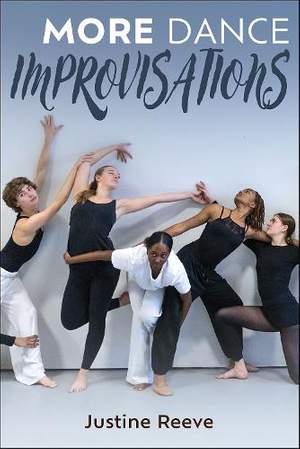More Dance Improvisations builds on the success of its predecessor, Dance Improvisations, and offers 78 brand-new activities that have been tested and refined by author Justine Reeve, a veteran dance instructor and choreographer.
This text offers a wealth of creative ideas that instructors can use to help their dancers explore and experience movement. The 78 improvisation tasks and exercises support all portions of a dance class, from improvisation lessons, warm-ups, and games that stimulate creativity to choreographic tasks for creating movement material. These new activities will provide an invaluable source of creative ideas for all dancers, including those who are exploring their own professional practice.
More Dance Improvisations offers
- expert instruction in planning, teaching, and assessing students’ improvisations;
- a choreographic toolkit and glossary of dance and choreographic terms;
- step-by-step instruction and teaching tips that will save instructors preparation time; and
- extensions of each improv to aid further exploration and development of the improvisation skills.
Instructors can use the improvs for individual lessons or in developing an entire lesson plan. “The improvisation tasks and exercises will encourage dancers’ imaginative responses to a varied selection of stimuli, whether alone or in groups,” says author Justine Reeve. “These improvisations will give dancers the keys to unlock ideas that they will find useful on their choreographic journey.”
After an introductory chapter that covers many important topics on conducting safe and effective practices and workshops and on how to use the book, the text moves into its first set of improvisations: warm-up games. These games develop quick thinking, group thinking, movement communication, and an awareness of the needs and movements of others.
The next two chapters explore solo and duo improvisations as well as group creative tasks. Each improvisation task has a brief description, an image, numbered tasks for clarity, a teaching tip, and ideas to take the task further or develop the dance idea as appropriate.
Chapter 5 explores how the physical and aural setting can lead to creating interesting and considered dance. Chapter 6 encourages dancers to use movements, phrases, and sequences created in previous tasks to develop and structure the movement material into something new.
“These games, tasks, ideas, stimuli, and developments are here to give instructors and students a little push to find creative vision, explore movement, and discover how these ideas can be developed, adapted, and structured,” says Reeve. “Instructors will find new ways to help their dancers create original movements through both individual and group activities, and students will gain inspiration through using these improvisations.”
More Dance Improvisations promotes creativity that leads to innovative breakthroughs for students from middle school through college. It is the perfect resource to help dancers enjoy their exploration of movement and dance as they gain greater awareness of the capabilities they possess.
- ISBN: 9781718222427 (1718222424)



